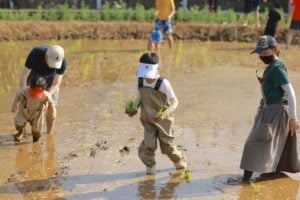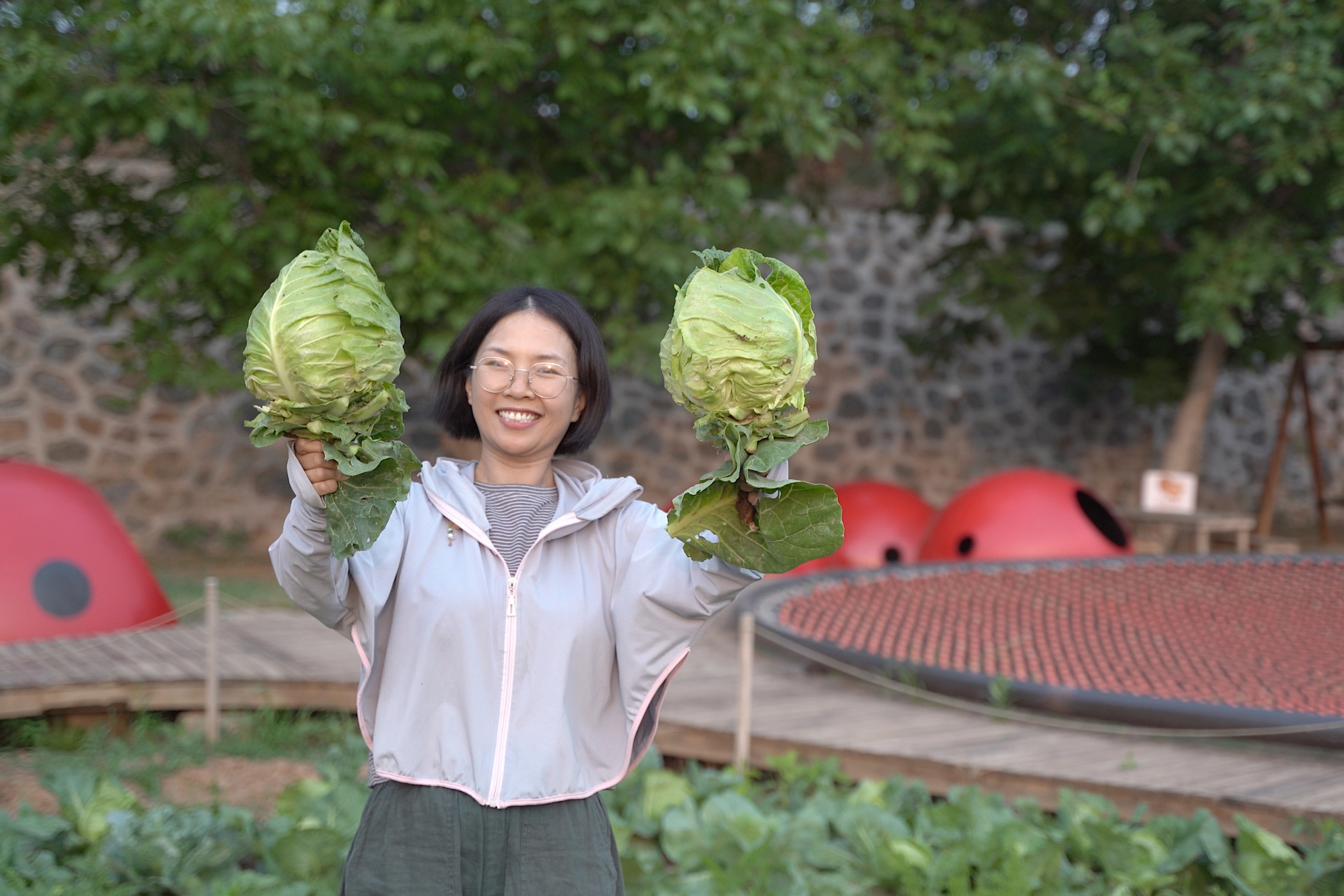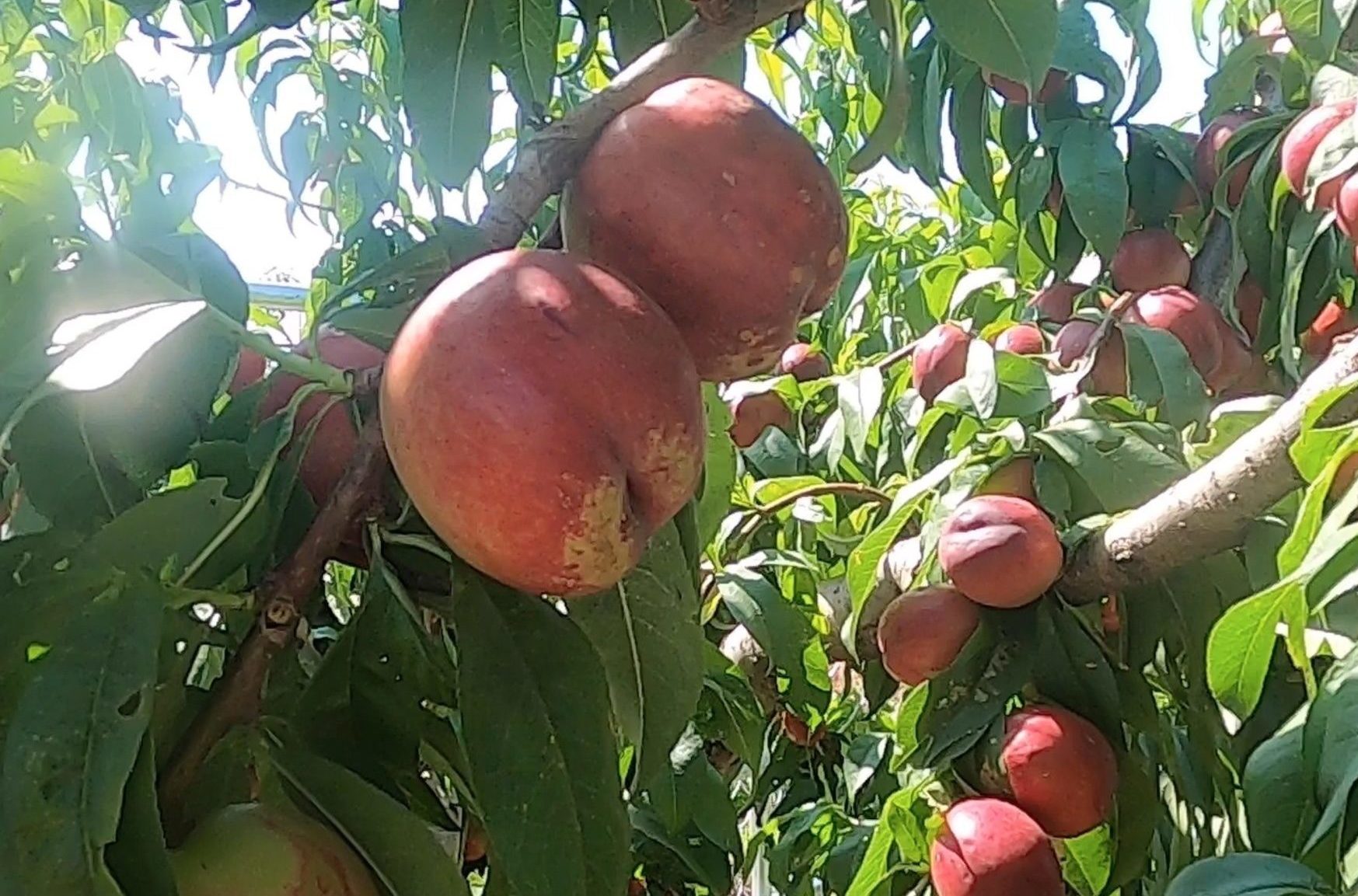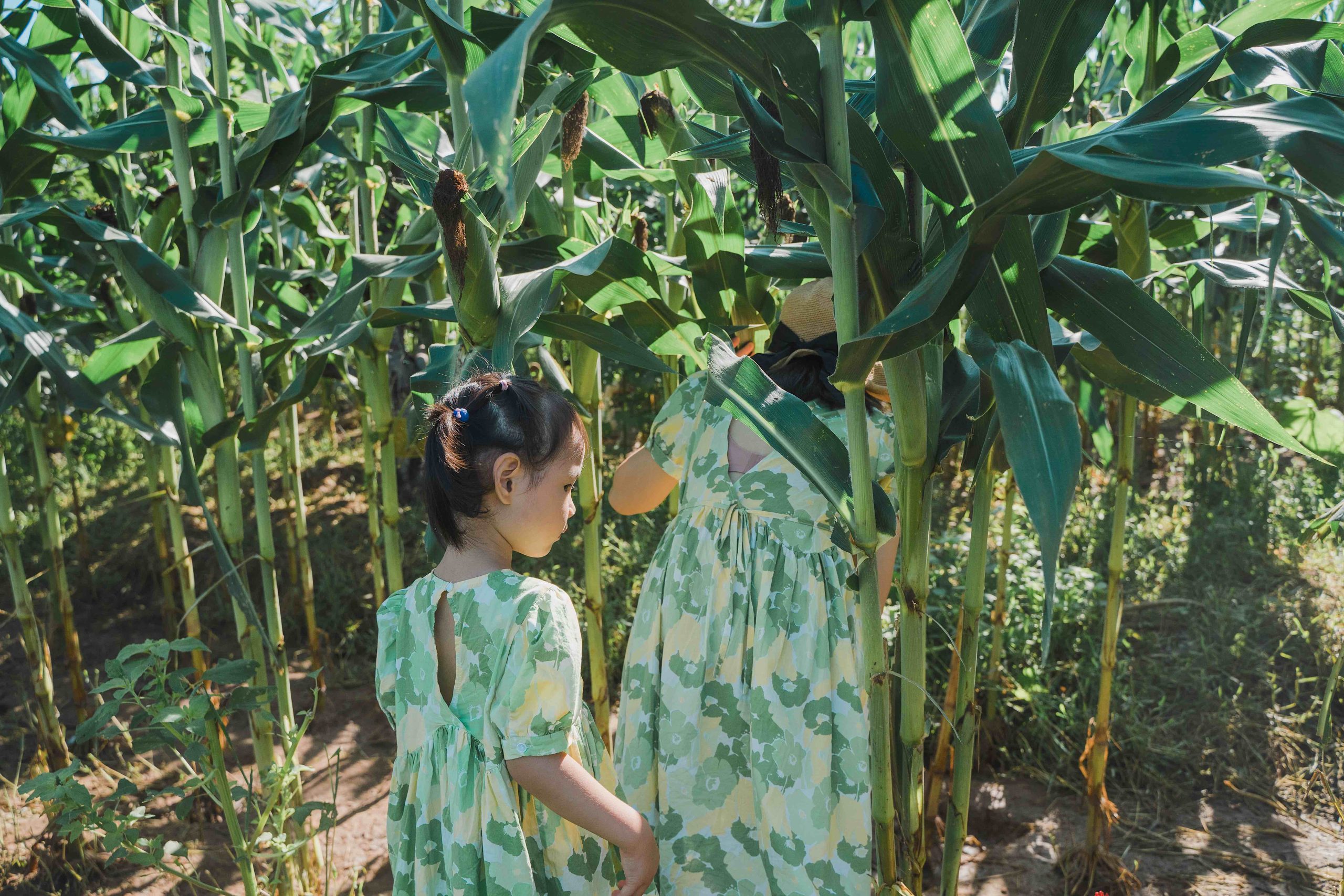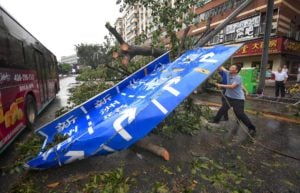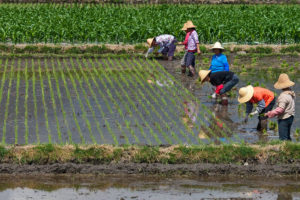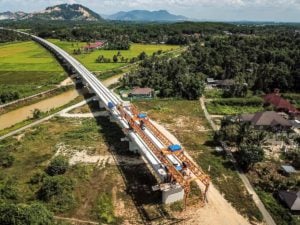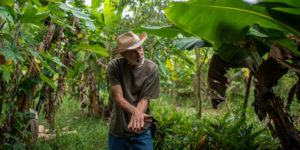There was a severe drought early this July, yet by the end of the month it was replaced by fears of flooding, recalls Wang Jing, a farm owner in Miyun county, north-east Beijing.
This summer, the Chinese capital logged both its second-highest temperature and heaviest single rainfall event since weather records began in 1883.
Many recent media reports have made comparisons to Beijing’s “7.21” storm of 11 years ago and the Zhengzhou “7.20” storm of two years ago. But nobody expected extreme weather records to be surpassed so frequently.
The issue is not confined to China. Last year, 90% of deaths related to disasters in Asia were a result of flooding, most of which occurred in Pakistan and India during May and June, according to a report by the World Meteorological Organization (WMO). Pakistan bore the largest economic brunt, facing US$15 billion of damage, followed by China, which lost more than $5 billion.
Climate change inflicts particularly severe damage on farming. In 2022, droughts in China persisted throughout almost the entire year. The Pearl River Basin saw drought through winter and spring, its longest and most severe since comprehensive records began in 1961. The North China Plain and north-western regions suffered the same fate in spring and summer. The Yangtze Basin then experienced drought throughout summer and autumn. Together these droughts led to over $7.6 billion of damage to Chinese agriculture, the WMO estimates.
Although timely notifications can be sent out to farmers’ phones and TVs to warn of short spells of extreme weather and allow for swift responses, few small-scale farms have what they need to respond appropriately – such as water reserves for droughts, guidance on agricultural technology, and sufficient funds.
As weather considered to be rare and extreme in the past decades and centuries gradually becomes the norm, “eco-smallholders” – those farmers who work on a small scale and do not use chemical pesticides or fertilisers – will increasingly bear the climate in mind, finding and making new adaptations.
Agricultural systems will also require perfected “climate services”. Such services include setting up historical climate databases, climate monitoring, weather forecasting, climate forecasting based on greenhouse gas emissions, and climate change impact prediction, according to the WMO’s Global Framework for Climate Services. Improving these services could offer farmers adequate time to prepare for potential impacts and take adaptive measures.
Peaches poach in heat
At 4am, Wang Jing is already up and out in the field, sleepily twisting large cabbages from their stalks. It’s the middle of the harvest period and she’s rushing to pick as much as she can before the sun comes up. This June has been Beijing’s hottest and driest ever: in three hours, the ground will be baking, and the air will feel hot to breathe.
Beijing has historically never been a farming region, so farms near the city often rely on agricultural and rural tourism. Wang Jing’s Birds and Beetles Eco-farm spans 50 mu (3.35 hectares) and is home to an orchard, animals, vegetable fields, restaurant and bakery.
In 2019, a friend who works for a meteorological technology firm helped her set up a weather station to monitor the local temperature, humidity, air pressure, precipitation, and wind strength and direction. Those records show that temperatures were over 40C for 17 days in June, of which four days saw temperatures exceed 43C.
This impacted Wang Jing’s fruit yield with an issue known as sunscald. As with human skin, a tree’s branches and fruits can be burned by strong sunlight, and this reduces harvests. “The peaches I was picking off the ground felt scalding hot,” she said.
Last year, the peaches were mature two weeks after first setting fruit. This year it took less than ten days – but resulted in less than a third of the harvest.
Between April and early July, China’s northern regions of Hebei, Shanxi and Inner Mongolia all saw an extended drought. Beijing is already short of water. It needs about 40 billion cubic metres a year, equivalent to around the entire volume of the Three Gorges Reservoir. To meet this need, the South–North Water Transfer Project draws water from Danjiangkou Reservoir in Henan province and transports it to Beijing, two provinces north, where it is piped to residents’ taps. But out in Miyun, around 90 km north of Beijing’s city centre, locals are more likely to use water from wells. While that’s usually enough for domestic use, there isn’t always enough to irrigate the field during dry spells.
“The drop in water pressure is noticeable when everyone in the village is using water,” she says. When she turns on the tap, a trickle emerges – not enough for the more efficient spray or drip irrigation. As a result, “we have no choice but to prioritise the vegetable patches, which are smaller,” she says. “We have 30 mu (2 hectares) of wheat and corn, but those crops will need to fend for themselves.”
Higher temperatures also mean higher electricity bills. The farm pays 0.80 yuan per kilowatt-hour, and this summer Wang Jing has seen bills of about 10,000 yuan a month for air-conditioning and refrigeration – twice the usual amount. “I feel very guilty for using air-conditioning,” she says. “It seems as if there’s a vicious circle we can’t break. So much of human activity causes climate change, increases temperatures, melts glaciers. But it’s so hot now that you need the air-conditioning on.
“It all seems hopeless.”
The lucky beekeeper in mountain torrents
In Beijing’s south-western Fangshan district, meanwhile, beekeeper Guo Tao and his over 100 beehives were lucky enough to emerge from the heat and floods relatively unscathed.
After three consecutive months of high temperatures and drought, Beijing finally experienced rain. However, it came in roaring waves: on 29 July, the red alert for storms – the highest – was sounded. River levels in Beijing, Tianjin, and many other regions continued to rise, causing multiple mountain torrents, along with land- and mud-slides.
Mountainous Fangshan was subject to one of the most serious of these. Guo Tao saw neighbours’ houses topple, riverside roads collapse, and cars drift in the floodwater, their emergency lights still flashing.
Before the rains, Guo Tao had put an 89cm-tall oil drum in the courtyard. “After three days I measured it to find that it was 9cm away from being full,” he said. The 800mm of rainfall recorded in that short timeframe is nearly twice the 482mm that the Beijing water authority recorded as falling in the city in the whole of 2022.
Beekeeping is incredibly sensitive to changes in weather. Research shows that both extreme rainfall and drought is bad for bees: they reduce the blossoming time for plants as well as the production of pollen, which affects the health of beehives and the quality of honey.
Because Fangshan has a large area covered with chaste trees, which provide plenty of nectar for bees, it is known as the “honey bank in west Beijing”. The chaste trees generally blossom from mid-June to mid-July. Guo Tao says high temperatures and drought have run across the entire blooming season, causing the flowers’ failure to produce nectar. Each beehive used to be able to produce 100 jin (50 kg) of honey; this year, they only produced around half of that.
In addition, high temperatures can lead to bees dying from overwork. The insects need to constantly collect water and fan their hive with their wings to cool down its interior. Under sweltering conditions, their life expectancy can fall from 30 to 15 days. “In these kinds of extended periods of heat, the colony can shrink significantly in a dozen or so days,” Guo Tao said. “50,000 bees might turn into 40,000 or 30,000.”
Guo Tao comes from a long line of beekeepers. His maternal great-grandparents began beekeeping in Beijing in 1940, and Guo is the fourth generation of his family to work in the trade. He thinks that, for beekeepers to create a more suitable environment in which bees can multiply, their work must be dictated by the laws of nature. However, he candidly says they have no means of responding to the increasingly extreme weather.
Guo Tao believes the only way he can adapt is by moving. “I could move to somewhere around Beijing with a higher altitude, like Mengtougou, or even Yanqing up north.” These villages are 700–1,000 metres above sea level, he notes, and for every 1,000 metres rise, temperatures drop by around 6C. This means chaste trees blossom a lot later there than in Fangshan.
Some species of flora and fauna are already moving.
“We see how species are adapting to climate change. Bees or flower, the general trend is to migrate to higher altitudes. It is worrying” says Patrick Schröder, senior research fellow from the Environment and Society Centre at thinktank Chatham House. “The term that’s often used is ‘the escalator to extinction’, because one day you will always run out of a higher, cooler place to go, and there will be nowhere to escape.”
Eco-smallholders adapting to climate change
Foodthink is an NGO that focuses on the sustainability of China’s food and agriculture system. It has been tracking the complex relationship between climate change and eco-smallholder farmers. Chang Tianle, Foodthink’s founding editor, says this phase of extreme weather in Beijing has heightened farmers’ awareness of climate change. “In the past, farmers relied on the weather to [dictate what they] eat, and disasters every decade or century were tolerable. But the increased intensity and frequency of extreme weather means they recognise the changes and are beginning to respond actively.”
Wang Jing has been considering various climate adaptation measures while running her farm. She believes that three have the most promise. One is growing larger trees to cool the immediate environment. In this vein, she got the farm to convert a double-decker bus into a coffee shop, which they parked by a group of trees – adding to the shade that alleviates the sweltering heat.
Wang Jing said her farm planted over 100 trees this spring, including London planes, which have broad crowns. “They haven’t grown yet, and the drought means they aren’t getting much bigger, but we hope to see some benefit in two or three years.”
Wang Jing has also been working to increase biodiversity on the farm. Currently, 80 different crops are planted, including fruit, vegetables, grains and flowers. They also raise chickens, ducks, geese and sheep; keep horses, and produce bread, jams and other products. The variety of products means there is always something to sell – even during periods of bad weather.
Her efforts have seen some success. The peach harvest may be down, but the herb garden – with its mint, stevia, Chinese mugwort and rosemary – is flourishing. And while there’s not much corn to sell, their farm-made bread and apricot jam have proven very popular. Daytime temperatures of 35C make it too hot for visitors, so the farm has been opening in the evenings and encouraging guests to sit by the fields and enjoy the moonlight.
“We’re not reliant on a single crop or aspect of the business. Even if we make a loss on the peaches, there’s profit to be made elsewhere. It looks like we’ll survive for now,” Wang Jing says. “We’re constantly being hit by the effects of climate change, but we aren’t giving up.”
Her farm has also introduced ecological ponds, fed by water that’s been used to wash and water crops before going through a reed pool to filter out sediment. The pond forms an ecosystem across four depths, growing over 30 kinds of aquatic plants, which creates an optimum environment for raising small fish and crustaceans.
The pond proved incredibly useful during the storms. “Because the bottom of the pond had not hardened and was still very sludgy, excess rain could permeate underground. I observed how the water level had not risen that much after the storm, and the water saved could be used for irrigation,” said Wang Jing.
Chang Tianle thinks eco-smallholders’ production methods are far more climate resilient than those of the mainstream farming industry. However, the aftermath of disasters, such as rapid grass growth after storms, or plant diseases and insect pests, bring additional costs as they cannot rely on chemical weed killers or pesticides.
“While bigger farms can easily get state subsidies for things like building infrastructure, small-scale family farms with just a few dozen mu of land have to fork up the money themselves,” said Chang.
Chang and Schröder think smallholders face great challenges in adapting to the changing climate alone. Both believe that governments can do more to help them with policy design, such as setting up city-level adaptation funds to subsidise smallholders with equipment and infrastructure, and strengthen their capacity for climate adaptation, such as skills training, awareness-raising, and fostering local farmer mutual-aid organisations.
“China is quite good at reacting to these natural disasters, but the question is how do we do long-term adaptation measures that help the agriculture system as a whole, not just the small-scale farmers,” says Schröder.
How climate services can help farmers prepare
China’s responses to extreme weather are becoming increasingly comprehensive. Last year, an updated version of the National Strategy for Climate Change Adaptation emphasised climate change monitoring and warnings, as well as risk management. China is already a leader in short-term monitoring and warnings: it can report on weather up to 8.5 days in advance, and warnings of strong convection currents – which can lead to storms – have already been brought forward by 42 minutes. Through their phones, televisions and radios, citizens can receive colour-coded weather warnings – blue, yellow, orange, and red – as well as emergency advice from the meteorological office and government departments.
An anonymous expert in the agriculture and climate adaptation field said that early warning systems are mainly to address emergencies and to avoid loss of life and property. At present, China’s climate disaster reduction is biased towards early warning, and more needs to be done on climate services.
The expert noted that simply stressing warnings is “nowhere near enough … What’s more important is to look back through history and previous data to identify laws and trends in how the climate is evolving, and new characteristics of average trends and extreme weather events, before sharing these with everyone,” he told China Dialogue. “This should be how we better respond to climate change.”
Climate services can “translate” data into information that government organisations and smallholders can use to implement actual change. Users will be able to ask what kind of effect the weather will have, rather than just what the weather will be like.
Impact-based forecasting (IBF) combines weather and climate predictions with socioeconomic factors, such as age, gender, income, and exposed assets, like infrastructure and agricultural output. This helps identify levels of vulnerability to hazards in advance.
In June, at the European Climate Change Adaptation Conference, the Irish National Meteorological Service (INMS) published TRANSLATE. This forecast programme synthesises past and present climate information to predict a series of possible scenarios based on greenhouse gas emissions trajectories. In turn, these scenarios help various government departments, such as energy and transport, to form climate-risk policies.
INMS climate services manager, Keith Lambkin, said the recommendations derived from TRANSLATE can be used to improve climate resilience. Giving the example of the built environment, he said: “We need to ensure future buildings and infrastructure can deal with extreme temperatures and that roadside drains can handle changes in rainfall.”
Xu Yinlong, a professor at the Agricultural Environment and Sustainable Development Institute of the Chinese Academy of Agricultural Science, pointed out in an article that extreme weather was starting to reveal new trends in China. High temperatures, extreme cold and drought would all increase in intensity and frequency. The Yangtze River Basin heatwaves would last longer, and the south-west’s droughts would span longer across seasons. While the rain belt would shift north, bringing rains to the north earlier. In addition, the chance of disasters like severe hail, landslides, and snowstorms, would all increase.
“Agricultural systems’ abilities to resist disasters face ever-growing challenges. In light of this, previous thinking on disaster reduction needs adjusting. The need for improved climate services increases by the day,” said the anonymous expert.
